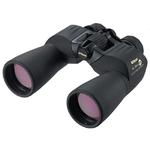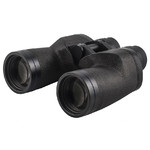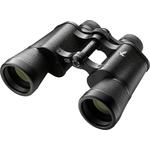The Ultimate Guide to Astronomy Binoculars: Nikon, APM, and Swarovski. From a Night Sky Enthusiast.
When I look up at the starry sky, I always feel a sense of wonder. It’s an experience that never ceases to amaze me, even after years of observation.
For us astronomy enthusiasts, whether beginners or experts, binoculars are an essential tool. They’re not just a budget-friendly alternative to a telescope but a true travel companion.
With good binoculars, you can learn to navigate the constellations, spot star clusters and nebulae, and even enjoy the Milky Way in all its splendor.
It’s a tool that doesn’t require complicated setups: you grab it, step outside, and observe. And if you already own a telescope, binoculars become the perfect complement, ideal for exploring wide sections of the sky before aiming your lens at a specific target.
In summary – Our top pick for everyone:
The Nikon Action EX 10×50 offers the best price-to-performance ratio, suitable for both beginners and experts. However, I recommend reading the entire guide before deciding! You might prefer other binoculars depending on your needs.

Check out the Nikon EX 10×50 on Astroshop.eu, Europe’s largest retailer of astronomy equipment, with locations in several countries:
Whether you’re a beginner taking your first steps or an expert with hours of observation behind you, a quality pair of binoculars should always be part of your equipment.
But how do you choose the right one?
Criteria for Choosing Astronomy Binoculars
The first thing to consider is optical quality. It’s not just about magnification but about seeing with clarity and definition. The lenses must be well-crafted, free of impurities, and equipped with advanced anti-reflective coatings to ensure sharp, high-contrast images.
Brightness is equally crucial: the night sky is a dimly lit environment, so the binoculars need to gather as much light as possible. For this reason, formats like 8×40 and 10×50 are often the most suitable.

The first number (8x or 10x) indicates the magnification, while the second (40 or 50) represents the lens diameter in millimeters. For example, a 10×50 offers a good balance between power and light-gathering ability, making it versatile for observing both constellations and fainter objects like nebulae and galaxies.
Then there are so-called giant binoculars, like the 20×80, which many consider exceptional for astronomy. It’s true—their wide aperture allows them to capture a lot of light—but they’re not practical for everyone.
They’re heavy, bulky, and impossible to use handheld: they require sturdy, stable tripods, often with specific adapters. This makes them better suited for specialized use.
But for someone looking for a tool to grab quickly and take along on a nighttime walk, the convenience of a more compact pair, which you can use without support, is unbeatable.
Now, let’s take a closer look at our selection of 3 excellent models.
1. Nikon Action EX 10×50: A Classic for the Starry Sky
When choosing binoculars for astronomy, opting for a brand like Nikon is a safe bet. For decades, Nikon has been synonymous with quality optics, not only for photography but also for instruments like binoculars and spotting scopes.
With the Nikon Action EX 10×50, you get a product that offers an excellent balance between performance and practicality. The 10×50 format is already a benchmark for those seeking bright binoculars: the 50 mm lens diameter allows them to gather a significant amount of light, essential for observing faint celestial objects like nebulae and galaxies.
This binocular uses so-called Porro prisms, an optical configuration named after the Italian engineer Ignazio Porro, who developed it in the 19th century. Porro prisms are arranged to create a “Z”-shaped optical path, which allows for greater separation between the objective lenses and the eyepiece lenses.
This design, simpler than roof prisms, is particularly well-suited for astronomy: fewer optical surfaces mean less light dispersion, a crucial factor when observing the faint glow of stars. It’s no coincidence that the other binoculars on this list also use this configuration—in astronomy, simplicity is a valuable asset.
The Nikon Action EX 10×50 has several features that make it an excellent choice. Its multi-coated anti-reflective lenses and BaK-4 prisms ensure sharp, high-contrast images with optimal light transmission. It’s also durable: the body is rubber-coated for a secure, shock-resistant grip, and it’s waterproof and fog-proof thanks to nitrogen filling. This makes it ideal for tough conditions, like nighttime humidity or rugged outdoor excursions. The field of view is wide (about 6.5 degrees), perfect for exploring large sections of the sky, and its weight of around 1 kg keeps it manageable for handheld observation sessions. However, for longer sessions, a tripod can be helpful (or better yet, a tip: try stargazing while comfortably reclining on a deck chair—it’s a fantastic position for summer binocular observations!).
If you’re thinking of a gift for a young astronomy enthusiast, this binocular is a safe bet. Not only will it impress, but it also offers a tool that can truly make a difference. The price is reasonable, yet the optical quality is surprising for this range. Even an experienced astronomer will find it a reliable companion: it’s not among the most expensive binoculars, so there’s no fear of damaging it by taking it on the go, keeping it in the car for impromptu observations, or using it in less-than-ideal conditions. It’s the kind of tool you won’t hesitate to use, and that’s a quality every enthusiast appreciates.
Nikon Action EX 10×50
The Nikon Action EX 10×50 offers the best price-to-performance ratio, suitable for both beginners and experts.

Check out the Nikon EX 10×50 on Astroshop.eu, Europe’s largest retailer of astronomy equipment, with locations in several countries:
2. APM 10×50 ED APO: The Binocular for Demanding Astronomers
Let’s now move on to a binocular in a higher price and performance range: the APM 10×50 ED APO. This instrument is specifically designed for astronomy, and it shows in the details that make a difference. For example, the focus is individual for each eyepiece. This system, typical of high-end binoculars for astronomical use, allows for precise sharpness adjustment for each eye—a huge advantage when observing stars. It’s no coincidence that binoculars with this feature are less suited for general use: the lack of central focusing makes them less practical for dynamic activities like birdwatching, where you need to quickly adjust for distance. But for astronomy, where the observed object is often fixed and distant, individual focusing is perfect.
Another feature that sets the APM 10×50 ED APO apart is the use of low-dispersion lenses, indicated by the ED (Extra-low Dispersion) designation. These lenses are designed to minimize chromatic aberrations, an optical phenomenon where light, composed of different frequencies, disperses as it passes through the lenses, creating colored halos around bright objects. ED lenses reduce this effect, ensuring sharper and more contrasted images, especially when observing bright stars or luminous edges like those of the Moon. It’s a feature that makes a difference, particularly for those seeking fine details and a high-quality visual experience.
APM is a German brand that has earned an excellent reputation among astronomy enthusiasts. Founded as a company specializing in the distribution of high-end optical instruments, APM (short for Astro-Photo-Mechanik) has distinguished itself for the quality of its apochromatic refractors and binoculars designed for celestial observation. After taking over the distribution of instruments from the historic “telescope workshop” TMB, APM has continued to offer products that combine optical precision and mechanical robustness, becoming a benchmark for the most discerning astronomers.
The APM 10×50 ED APO sits in a higher price range than the Nikon Action EX 10×50 — about twice as expensive — but it offers features that justify the investment. It’s a binocular for those who want to treat themselves, for those who understand that quality comes at a cost and that, in astronomy, every detail matters. Experienced astronomers will find this instrument to be a perfect ally for unforgettable observation sessions: the sharpness of the images, the brightness, and the chromatic correction make it ideal for exploring star clusters, nebulae, and galaxies. The design is also well-crafted: the magnesium body makes it lightweight and durable, while the nitrogen filling ensures waterproofing and protection against fogging.
If you’re an astronomer who isn’t satisfied with settling and wants the best for your observations, the APM 10×50 ED APO is a choice that won’t disappoint. It’s a binocular that will deliver excitement every time you point it at the sky.
APM 10×50 ED APO
The APM 10×50 ED APO

Check out the APM 10×50 ED APO on Astroshop.eu, Europe’s largest retailer of astronomy equipment, with locations in several countries:
3. Swarovski Habicht 7×42: A Timeless Icon
And here we are, at a true gem, a jewel of optics that every astronomer should treat themselves to at least once in their lifetime: the Swarovski Habicht 7×42. This binocular is more than just a tool; it’s an icon, a symbol of excellence that, despite the passage of time, remains a benchmark thanks to the Austrian company’s ability to refresh it without betraying its essence. Swarovski is synonymous with absolute quality, and the Habicht 7×42 is no exception.
At first glance, it might seem odd to go from the 50 mm diameter of the previous models to a 42 mm. But don’t be fooled: it’s not just about size, but optical quality. Swarovski lenses are renowned for their purity and advanced multilayer coatings that ensure exceptional light transmission, up to 96%. This means that, despite the slightly smaller diameter, the amount of light reaching your eyes is remarkable, surpassing many binoculars with larger but lower-quality lenses. It’s like looking through invisible glass: the images are bright, sharp, and with a contrast that leaves you speechless.
The 7x magnification might seem less powerful compared to a 10x, but it’s actually an advantage for astronomy. Lower magnification means a wider apparent field of view, ideal for exploring large sections of the sky and navigating between constellations. Additionally, the 6 mm exit pupil (among the largest in this category) allows you to make the most of the light gathered, making the binocular perfect for observing in low-light conditions. This is especially useful for those observing under dark skies, where every photon counts.
The design of the Habicht 7×42 is another strength. The Porro prisms, like in the previous models, ensure optimal light transmission and a three-dimensional image that roof-prism binoculars can’t match. The body is sturdy yet lightweight, thanks to its aluminum alloy construction, and it’s completely waterproof and nitrogen-filled to prevent fogging.
There’s also a GA version (with green rubber armoring) that offers extra protection against impacts and abrasions. It’s a binocular that can handle the toughest conditions, ready to follow you anywhere.
But what makes the Habicht truly special is its history and character. It’s a binocular born from a tradition of over 70 years, with the first model produced by Swarovski in 1949. Yet, thanks to continuous improvements, it remains competitive today. It’s not just a tool but a piece of optical history, an object that blends tradition and innovation.
Of course, the price is higher than the previous models — around 1,000 euros — but it’s an investment worth every cent. For an astronomer, owning a Habicht 7×42 is like having a functional work of art: a tool that not only delivers exceptional performance but also represents a symbol of passion for the sky. It’s the binocular you’ll use for your most important observations, the one you’ll bring along on special nights, perhaps to observe an eclipse or a rare conjunction. If you’re an astronomy enthusiast, this is the binocular you dream of owning.
Swarovski Habicht 7×42
The Swarovski Habicht 7×42

Check out the Swarovski Habicht 7×42 on Astroshop.eu, Europe’s largest retailer of astronomy equipment, with locations in several countries:
Conclusion: The Right Binocular for Every Astronomer
And here we are, at the end of this journey through astronomy binoculars. We’ve explored three different tools, each with its own personality and strengths. The Nikon Action EX 10×50 is the reliable and affordable companion, perfect for beginners or those looking for a versatile binocular without breaking the bank. The APM 10×50 ED APO raises the bar, offering superior performance for the most demanding astronomers, with optical quality that justifies every euro spent. Finally, the Swarovski Habicht 7×42 is every enthusiast’s dream, an icon that blends tradition, elegance, and an unparalleled view of the sky.
The choice is yours: it depends on your budget, your needs, and the type of observations you want to make. If you’re just starting out or looking for a binocular to take anywhere, the Nikon won’t disappoint. If you want a tool specifically for astronomy and are willing to invest more, the APM is an excellent option. And if you’re seeking the best, an object that also symbolizes your passion, the Swarovski is waiting for you.
Whatever your decision, remember: a good binocular is not just a tool, but a gateway to the sky. It’s what allows you to lose yourself in the beauty of the universe, to discover details you could never see with the naked eye. And above all, it’s a tool that invites you to step outside, explore, and experience the night. So choose carefully and never underestimate the value of quality optics. The sky deserves to be observed at its best.



Lascia un commento